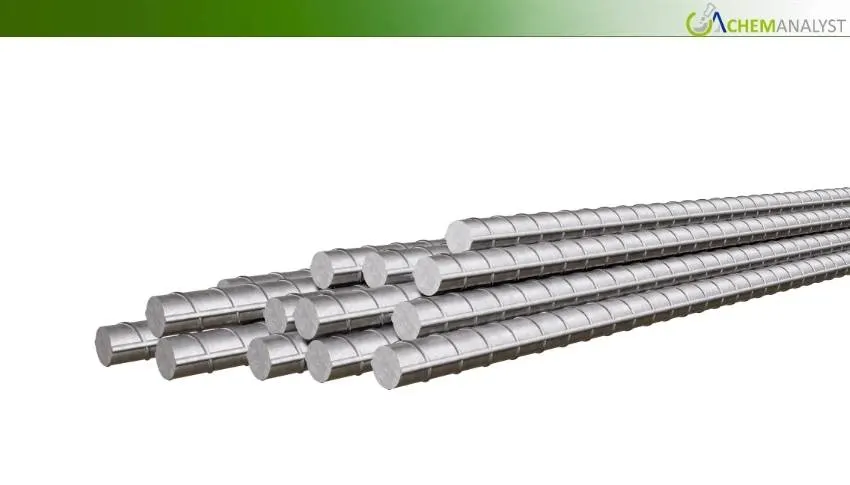Welcome To ChemAnalyst

In late October 2025, Steel rebar markets showed mixed performance across. Prices edged up in China, on a rebound in production and steady demand, while overall inventories were stable with regional variations. Prices in the U.S. were firm, even as seasonal weakness in demand set in, underpinned by limited supply and public-sector construction. Scrap price falls earlier in the month helped to stabilize steel rebar pricing, and with no new production capacity set to enter the market until 2026, November is likely to maintain current price stability.
In China, the price of steel rebar rose modestly by 0.9% on a week-to-week basis. In terms of production, the output of steel rebar rebounded significantly with a growth of 59,100 tons across the country. Jiangsu and Hebei provinces contributed greatly due to resumed operations in some steel mills and adjustments in hot metal output. Although parts of Southwest and North China saw minor declines in steel rebar supply, the overall supply of the steel product increased slightly.
Meanwhile, factory inventories of steel rebar remained largely stable, though regional disparities were evident. The most significant inventory decline occurred in East China, which lost 86,700 tons, while Central and Northwest China posted minor inventory gains. In the construction material sector, the total amount reached 2.9539 million tons-up 95,600 tons from the previous month.
Steel rebar demand continued to improve, and the trading volume surpassed 100,000 tons, reflecting a resilient release of downstream terminal demand. Market sentiment significantly improved due to more and more transactions and expanding sales areas of new commercial housing in some cities. Although real estate sales have seen improvement, how long such a rebound will last is yet to be established, and it also does not seem likely that there would be a significant rise in steel rebar consumption during the fourth quarter.
Given the current dynamics of supply, the trend in demand, and the broader macroeconomic environment, domestic prices for construction-grade steel rebar are likely to rise slightly during the week ahead.
US steel rebar prices did not change during the week due to ongoing seasonal demand weakness typical of the fall. Although end-user demand continued to be soft, especially in the private sector, limited domestic supply, due to production disruptions and maintenance at mini-mills, precluded any sharp price drops.
Support for the steel rebar market came primarily from public-sector initiatives, including infrastructure development, data center construction, and renewable energy projects. However, overall construction momentum softened. Total non-residential construction starts, both building and civil combined, fell to $45.7 billion in September 2025-a $4.9 billion decline from August and the third consecutive monthly drop since the mid-year peak.
Steel rebar prices in October were partly supported by a decline in scrap prices, which dropped $10–20 per ton in early October before stabilizing mid-month. This easing in raw material costs helped maintain current rebar price levels.
Looking at November, steel rebar prices should remain relatively stable. Supplies will still be constrained since any new production capacity, such as Nucor Lexington and Hybar Osceola, is not expected to affect the market until 2026.
We use cookies to deliver the best possible experience on our website. To learn more, visit our Privacy Policy. By continuing to use this site or by closing this box, you consent to our use of cookies. More info.
